ChiSao at the grappling distance
Combat takes place at various distances, all of them with their own specific possibilities. Where can we apply our major strength, i.e. ChiSao? Does ChiSao also work at the grappling distance? A few thoughts on this in my editorial.
GM Prof. Keith R. Kernspecht already defined the distances in combat in the 1980s, in his book “On Single Combat“ (see Figs. 1 to 5).
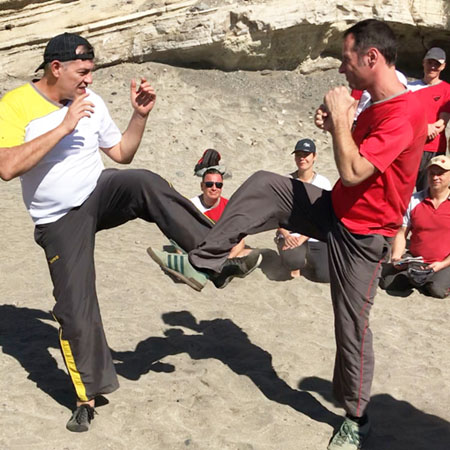 |
|
Fig. 1: Kicking distance
|
What is the most frequent distance in self-defence? Punch-ups and surprise attacks usually take place at very close range, from punching distance to ”wrestling, clinching and throwing”.
Our strength is ChiSao!
So what is the major strength of WingTsun? – Our ChiSao of course.
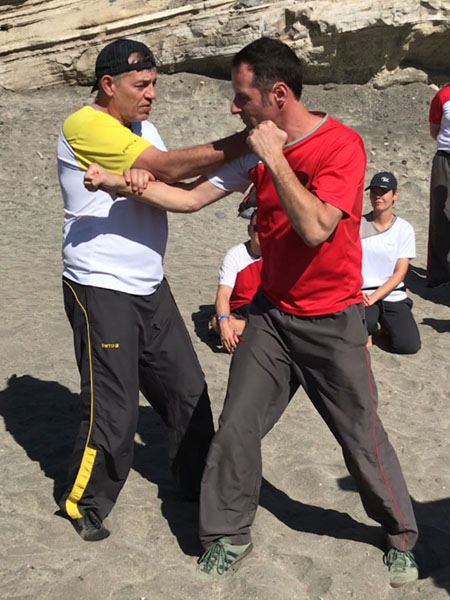 |
|
Fig. 2: Punching distance
|
This happens at the distance between boxing and wrestling, to express it in sporting terms. In other words, slightly closer than a boxer and slightly further away than a wrestler.
It is at precisely this distance that most physical confrontations take place. The opponent usually comes quite close, and a scuffle begins. This is where we can ideally apply our ChiSao!
Our phases in ritualised male combat:
- Eye-contact
- Rhetorical phase
- Pointing with the finger, shoving
- Wild punches/haymakers/curving attacks
- Degenerated phase: kicks to the head of the downed opponent
Those skilled in ChiSao therefore have advantages in the “pointing with the finger, shoving“ and ”wild punches” phases.
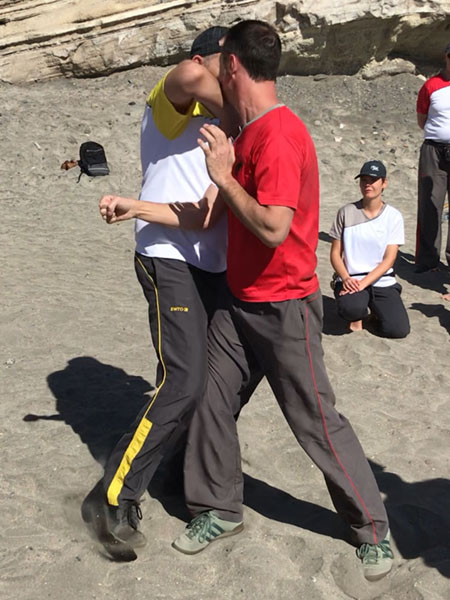 |
|
Fig. 3: Ellbow/knee distance
|
With his ”ChiSao Kuen” programme, GM Keith R. Kernspecht has devoted 2020 to the heart of WingTsun, namely functional ChiSao.
But what comes after the ChiSao distance? If the opponent comes closer, the result is usually a clinch with the opponent applying throws and takedowns, and the action continues on the ground.
The primary strategy should always be to control the opponent as soon as possible, and end the matter with decisive, hard blows. That will eliminate the chance of a clinch or throw right from the start.
However, if the opponent is already closer or has managed to prevail in the ChiSao phase, we have to continue. Now we need to use our ChiSao against attacks in the ”wrestling, clinching and throwing” phase.
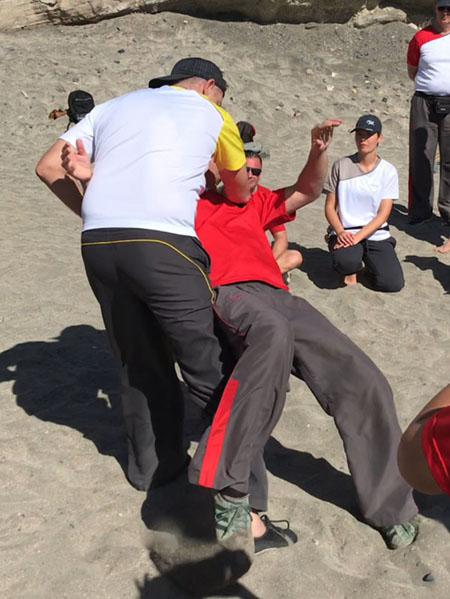 |
|
Fig. 4: Wrestling/clinching/throwing
|
To practice this we need attackers who are skilled in these attacks! In BlitzFight we learn throws and takedowns from a wide variety of styles. Not every WingTsun student has to learn these techniques as well, but it is important for our training partner to know at least the basics of such techniques.
A trained grappler will not just apply a takedown, he will use a combination and precede the actual throw with a series of blows, or work himself into the right throwing position with a form of ”wrestler’s ChiSao”.
When under stress, WT people often make the mistake of going too far forward, as they feel safe at the ChiSao distance. But if they engage too closely, they are at the grappling distance where a specialist in e.g. wrestling is better!
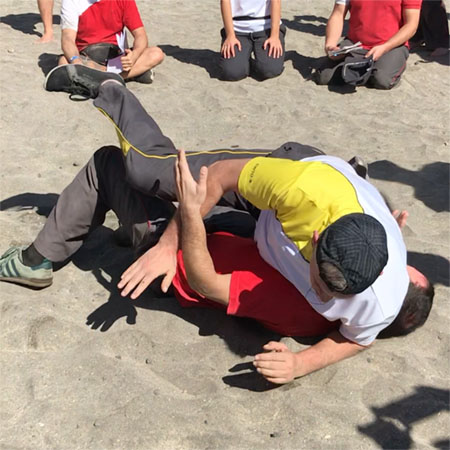 |
|
Fig. 5: Self-defence on the ground
|
If we are not mindful enough, or are attacked suddenly, the opponent can also get closer than we would like.
This means that we have to get fit for ChiSao at the grappling distance. GM Thomas Schrön and I have developed numerous exercises that will make everybody fit for ChiSao at this distance. Naturally including the use of our weapons, i.e. elbows, knees, punches, FaakSao, etc. to stop the opponent effectively!
The Easter and Whitsun seminars in Grosswallstadt near Frankfurt/Main are good opportunities to become familiar with this topic. We will show the typical mistakes that WT people make, allowing the opponent to apply his attacks in the ”wrestling, clinching and throwing” phase. We will also teach the most common groundfighting attacks, and how to deal with them.
See you soon in Grosswallstadt!
Your GM
Oliver König
Photos: hm


